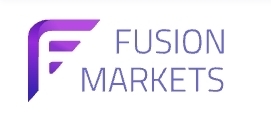Oanda.com Broker Review – Fees, Platforms, Pros & Cons (2026)
Share this:
- Click to share on Facebook (Opens in new window) Facebook
- Click to share on X (Opens in new window) X
- Click to share on Reddit (Opens in new window) Reddit
- Click to share on LinkedIn (Opens in new window) LinkedIn
- Click to share on WhatsApp (Opens in new window) WhatsApp
- Click to share on Pinterest (Opens in new window) Pinterest
- Click to email a link to a friend (Opens in new window) Email
- Click to share on Threads (Opens in new window) Threads
- Click to share on Tumblr (Opens in new window) Tumblr
- Click to print (Opens in new window) Print
- Click to share on Telegram (Opens in new window) Telegram
What is Oanda?
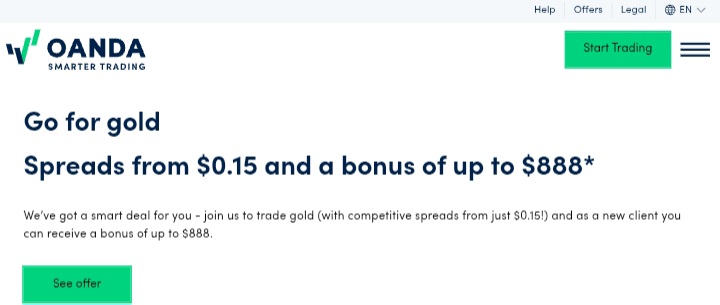
Oanda Corporation stands as a pioneering force in online forex trading, having launched its operations in 1996. The company operates through multiple subsidiaries across major financial hubs, including the United States, United Kingdom, Canada, Australia, Japan, and Singapore. Each entity serves specific regional markets with tailored product offerings and regulatory compliance.
The broker specializes in forex and CFD trading, offering access to currency pairs, indices, commodities, and cryptocurrencies. Oanda processes millions of trades monthly and maintains a strong institutional presence alongside its retail trading services. The company’s proprietary technology and market-making capabilities have positioned it as a significant player in the global forex market.
In August 2025, FTMO Group acquired Oanda from CVC Asia Fund IV, marking a new chapter in the broker’s evolution. This acquisition brings together FTMO’s educational expertise with Oanda’s established trading infrastructure. The partnership aims to enhance trading education and expand service offerings for retail traders worldwide.
Is Oanda a Legit & Safe Broker?
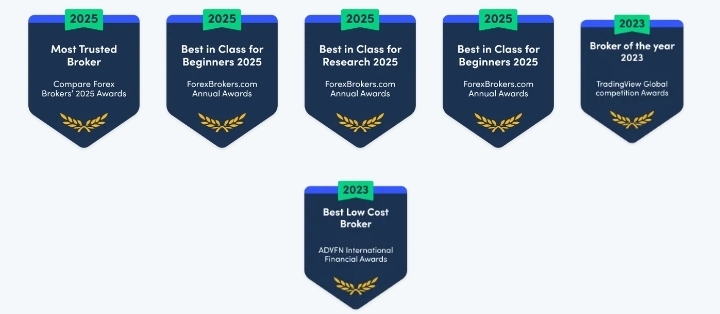
Oanda earns a Trust Score of 93 out of 99, placing it among the most trustworthy brokers in the industry. This exceptional rating reflects the broker’s extensive regulatory oversight and decades of operational excellence. The company maintains licenses with seven Tier-1 regulators, the highest classification for financial authorities.
Key regulatory licenses include authorization from the Commodity Futures Trading Commission (CFTC) in the United States, the Financial Conduct Authority (FCA) in the United Kingdom, and the Australian Securities & Investment Commission (ASIC). Additional oversight comes from the Canadian Investment Regulatory Organization (CIRO), Japanese Financial Services Authority (JFSA), and Monetary Authority of Singapore (MAS). The broker also operates under MiFID passporting regulations within the European Union.
Client fund security remains a top priority at Oanda. The broker segregates retail client funds from operational capital, ensuring protection in unlikely insolvency scenarios. Depending on your jurisdiction, additional investor compensation schemes may apply. For instance, UK clients benefit from Financial Services Compensation Scheme (FSCS) coverage up to £85,000.
The company’s financial stability receives regular validation through published financial statements and regulatory reporting. Oanda has never faced major regulatory sanctions that would compromise client trust. This clean regulatory record spanning nearly three decades demonstrates consistent compliance with international financial standards.
Oanda Account Types
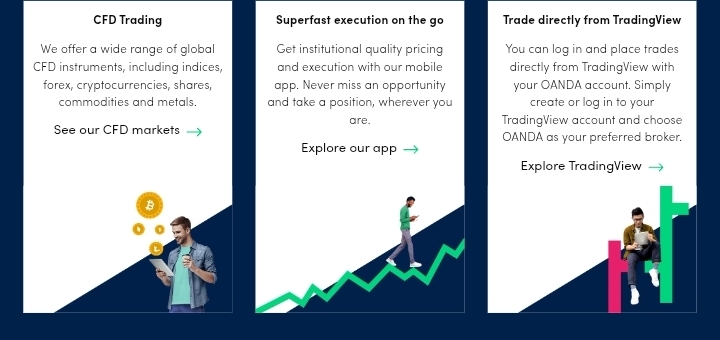
Oanda maintains a streamlined approach to account offerings, focusing on accessibility rather than complex tier structures. The broker requires no minimum deposit to open a standard trading account, making it accessible to traders of all experience levels and capital sizes.
Standard accounts provide access to all available trading instruments with competitive spreads starting from 0.6 pips on major pairs. These accounts suit most retail traders and include full platform access, research tools, and educational resources. The standard account operates on a spread-only model with no additional commissions on forex trades.
Core Pricing accounts offer tighter spreads plus commission-based pricing for active traders. This option requires a $10,000 minimum deposit but delivers more competitive all-in costs for high-volume trading. Core Pricing clients pay $5 per $100,000 traded (per side), with spreads starting as low as 0.0 pips on major pairs.
Demo accounts provide risk-free practice with virtual funds up to $100,000. These accounts mirror live trading conditions and remain active indefinitely with regular use. Demo traders access the same platforms, tools, and market data as live account holders. The seamless transition from demo to live trading helps beginners develop confidence before risking real capital.
Professional traders in eligible jurisdictions may qualify for Professional account status. This classification offers higher leverage ratios but requires meeting strict financial criteria. Professional accounts forfeit certain regulatory protections, making them suitable only for experienced traders with substantial capital.
Oanda Trading Platforms
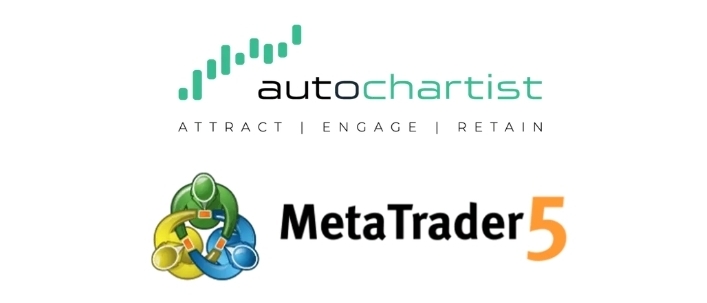
Oanda Trade represents the broker’s proprietary platform solution, available via desktop, web, and mobile applications. The platform integrates TradingView charting technology, delivering over 80 technical indicators and comprehensive analysis tools. Real-time market data streams ensure accurate pricing across all tradeable instruments.
The desktop version offers advanced functionality including one-click trading, customizable layouts, and multi-monitor support. Web-based access provides identical features without software installation requirements. Both versions synchronize account data and preferences, allowing seamless transitions between devices.
MetaTrader 4 (MT4) remains available for traders preferring this industry-standard platform. Oanda’s MT4 implementation includes custom indicators, expert advisor support, and enhanced execution speeds. The broker provides free VPS hosting for qualifying accounts, ensuring uninterrupted automated trading strategies.
MetaTrader 5 (MT5) has recently launched in select regions, including the UK, Japan, and emerging markets. This next-generation platform offers additional timeframes, more order types, and an integrated economic calendar. MT5’s multi-asset capabilities align with Oanda’s expanded instrument offerings.
Platform integration extends beyond traditional solutions through Oanda’s API services. The REST and streaming APIs support custom application development in Python, Java, and other programming languages. Algorithmic traders leverage these tools for automated strategy implementation and backtesting.
Third-party platform connectivity includes TradingView, NinjaTrader, and MultiCharts. These integrations allow traders to execute orders through preferred charting packages while maintaining Oanda’s competitive pricing and execution quality. The broker’s open architecture approach accommodates diverse trading styles and technical requirements.
Trading Instruments Available

Oanda offers an extensive range of tradeable markets, though availability varies by regulatory jurisdiction. The complete instrument lineup includes up to 4,172 symbols across multiple asset classes, positioning Oanda among brokers with the broadest market coverage.
Forex trading encompasses 69 currency pairs, including all majors, numerous minors, and rich combinations. Traders access competitive spreads on popular pairs like EUR/USD, GBP/USD, and USD/JPY. The broker’s decades of forex expertise translate into reliable execution and deep liquidity across currency markets.
Index CFDs cover major global benchmarks such as the S&P 500, FTSE 100, DAX 40, and Nikkei 225. These instruments allow speculation on broader market movements without purchasing individual stocks. Oanda provides both cash and futures-based index products with competitive overnight financing rates.
Commodity CFDs include precious metals, energy products, and agricultural goods. Gold and silver remain popular choices for portfolio diversification, while crude oil and natural gas offer exposure to energy markets. Agricultural commodities like wheat and corn provide additional trading opportunities during seasonal volatility.
Cryptocurrency CFDs are available in select regions, covering major digital assets like Bitcoin, Ethereum, and Litecoin. These products allow crypto speculation without wallet management or exchange security concerns. Note that crypto CFDs remain unavailable to US and UK retail clients due to regulatory restrictions.
Individual stock CFDs span major US and international equities, enabling traders to speculate on company performance without traditional share ownership. This addition significantly expands Oanda’s product range beyond its traditional forex focus.
Bond CFDs round out the offering with government debt instruments from major economies. These products appeal to traders seeking fixed-income exposure or hedging opportunities during market uncertainty.
Oanda Fees, Spreads & Commissions
 Oanda’s pricing structure varies between standard and core pricing accounts, with costs generally higher than discount brokers but competitive within the established broker segment. Understanding the complete fee structure helps traders evaluate true trading costs beyond advertised spreads.
Oanda’s pricing structure varies between standard and core pricing accounts, with costs generally higher than discount brokers but competitive within the established broker segment. Understanding the complete fee structure helps traders evaluate true trading costs beyond advertised spreads.
Standard account spreads average 1.69 pips on EUR/USD based on August 2025 data, including all trading sessions. This places Oanda’s default pricing above industry leaders but comparable to other well-regulated brokers. Major pairs typically see spreads between 1.2 and 2.0 pips during normal market conditions.
Core Pricing delivers tighter spreads starting from 0.0 pips plus $5 commission per $100,000 traded (per side). When factoring in commission costs, the all-in expense often totals 1.4 pips on EUR/USD—a meaningful improvement over standard pricing. The $10,000 minimum deposit requirement limits accessibility for smaller traders.
The Elite Trader program offers volume-based rebates ranging from $5 to $17 per million traded. Qualification requires monthly volumes exceeding 10 million units. Additional benefits include spread reductions up to 30% and TradingView subscription reimbursements for Premium and Elite tiers.
Overnight financing charges apply to positions held past 5 PM Eastern Time. These swap rates vary by instrument and current interest rate differentials. Oanda publishes current financing rates within its platforms, promoting transparency in carrying costs.
Non-trading fees remain minimal with no account maintenance charges, inactivity fees, or deposit fees for most payment methods. Wire transfer withdrawals may incur bank charges, though electronic payment options typically process free of charge. Currency conversion fees apply when depositing or withdrawing in non-base currencies.
Oanda’s transparent pricing approach includes real-time spread monitoring and historical spread data publication. Traders can review average spreads across multiple timeframes, helping inform cost expectations during different market conditions.
Oanda Deposit & Withdrawal Methods
Oanda supports diverse payment methods to accommodate global clients, with options varying by region and regulatory requirements. The broker processes most deposits instantly while maintaining strict security protocols for fund transfers.
Bank wire transfers remain the primary funding method for large deposits, offering unlimited transaction sizes in most jurisdictions. Processing typically completes within 1-3 business days, though international transfers may require additional time. Wire deposits incur no broker fees, though sending banks may charge transaction fees.
Debit and credit cards provide instant funding for smaller amounts, typically limited to $10,000 per transaction. Visa and Mastercard acceptance ensures broad compatibility, while 3D Secure authentication enhances transaction security. Card deposits must originate from accounts matching the trading account holder’s name.
Electronic wallets including PayPal and Skrill offer convenient funding alternatives in supported regions. These methods combine instant processing with enhanced security features. E-wallet transactions typically process within minutes during business hours.
Withdrawal processing follows strict verification procedures to prevent fraud and ensure regulatory compliance. Initial withdrawals require identity verification including government-issued ID and proof of address. Subsequent withdrawals to verified payment methods process more quickly.
Processing times vary by withdrawal method, with e-wallets typically completing within 24 hours and bank wires requiring 3-5 business days. Oanda prioritizes withdrawal requests, aiming to approve transactions within one business day of receipt. The broker imposes no withdrawal fees for most methods, though receiving banks may charge incoming wire fees.
Multiple currency support allows funding in USD, EUR, GBP, AUD, CAD, JPY, and other major currencies. The broker applies competitive exchange rates for currency conversions, though traders can minimize costs by maintaining base currency consistency.
Oanda Trading Tools

Oanda provides an extensive toolkit designed to enhance trading decisions and streamline market analysis. These resources range from integrated platform features to standalone applications supporting various trading styles.
Autochartist integration delivers automated technical analysis across multiple timeframes and instruments. The pattern recognition technology identifies chart formations, key levels, and volatility analysis. Traders receive real-time alerts when high-probability setups emerge, supporting both manual and automated trading approaches.
The Oanda Order Book and Position Ratio tools offer unique market sentiment insights derived from actual client positioning data. These proprietary indicators help identify potential support and resistance levels based on aggregate client orders and open positions. Such transparency provides valuable context for trading decisions.
Market volatility analysis tools help traders understand current and historical price movement patterns. The platform calculates average true range (ATR) and other volatility metrics across all instruments. This data supports position sizing decisions and risk management strategies.
Economic calendar integration keeps traders informed about upcoming market events and data releases. The calendar includes impact ratings, consensus forecasts, and historical data for major economic indicators. Real-time updates ensure traders never miss market-moving announcements.
Oanda Labs serves as an innovation hub for experimental trading tools and beta features. Current offerings include advanced API functionality, machine learning applications, and quantitative analysis tools. These cutting-edge resources appeal to technically sophisticated traders seeking competitive advantages.
Risk management features include guaranteed stop losses (where available), trailing stops, and partial position closing. The platform’s margin calculator helps traders understand leverage implications before entering positions. These tools promote responsible trading practices and capital preservation.
Oanda Mobile App Review
The Oanda Trade mobile app delivers comprehensive trading functionality optimized for iOS and Android devices. The application balances sophisticated features with intuitive design, earning recognition as one of the industry’s leading mobile trading solutions.
Interface design prioritizes usability without sacrificing functionality. The home screen provides account overview, watchlists, and quick access to positions. Customizable layouts allow traders to arrange information according to personal preferences. Touch-optimized controls ensure smooth navigation across all features.
Charting capabilities rival desktop platforms with 33 technical indicators and 13 drawing tools. Traders can analyze multiple timeframes from one-minute to monthly charts. The responsive design allows precise technical analysis even on smaller smartphone screens. Horizontal orientation unlocks expanded chart views for detailed analysis.
Trade execution remains fast and reliable through optimized order entry screens. One-tap trading enables quick position entry, while advanced order types support complex strategies. The app maintains connection stability across cellular and WiFi networks, ensuring consistent market access.
Push notifications keep traders connected to market movements and account activity. Customizable alerts trigger on price levels, technical indicators, or news events. The notification system balances informativeness with user control to prevent alert fatigue.
Platform synchronization ensures seamless transitions between mobile and desktop trading. Open positions, pending orders, and watchlists update in real-time across all devices. This consistency allows traders to monitor and manage accounts from any location.
Performance optimization delivers smooth operation even on older devices. The app’s efficient resource usage preserves battery life during extended trading sessions. Regular updates introduce new features while maintaining stability and reliability.
If you’re a crypto or mining-focused trader, also check:
Best Bitcoin Mining Apps & Sites (2026)
Oanda Customer Support
Oanda’s customer service operates through multiple channels to accommodate diverse client preferences and urgent support needs. The support infrastructure reflects the broker’s global presence with localized assistance in major markets.
Live chat provides immediate assistance for account questions and technical issues. Support agents demonstrate strong product knowledge and communicate clearly in multiple languages. Average response times remain under two minutes during business hours, with 24/5 availability covering active trading sessions.
Phone support offers direct communication for complex issues requiring detailed discussion. Regional phone numbers ensure local call rates for clients worldwide. Support staff handle everything from basic account queries to advanced platform troubleshooting.
Email support suits non-urgent inquiries with typical response times under 24 hours. The ticket system tracks communication history, ensuring continuity when issues require multiple interactions. Detailed responses often include screenshots or step-by-step instructions for technical solutions.
The comprehensive help center contains hundreds of articles covering common questions and platform guides. Search functionality helps locate specific topics quickly, while category organization supports browsing. Video tutorials complement written guides for visual learners.
Social media presence on Twitter and Facebook provides additional communication channels. While not suitable for account-specific issues, these platforms offer market updates and general assistance. Response times vary but generally remain prompt during business hours.
Multilingual support accommodates Oanda’s international client base with assistance available in English, Spanish, French, German, Italian, and Asian languages. This linguistic diversity ensures clear communication regardless of client location.
Pros and Cons
Pros
Strong global regulation provides exceptional client protection through oversight from seven Tier-1 financial authorities. This regulatory framework ensures fund safety and operational transparency across all jurisdictions.
No minimum deposit requirement makes Oanda accessible to traders of all capital levels. The ability to trade micro lots as small as one unit further reduces barriers to entry.
Advanced trading tools including Autochartist, sentiment indicators, and API access support sophisticated trading strategies. These professional-grade resources typically require additional fees at competing brokers.
Quality market research from MarketPulse and Trade Tap Blog delivers actionable trading insights. Daily analysis covers major market themes with both fundamental and technical perspectives.
Established industry reputation spanning nearly three decades demonstrates long-term stability and reliability. Oanda’s track record includes weathering multiple financial crises without client fund losses.
Cons
Above-average spreads compared to discount brokers may impact profitability for high-frequency traders. Even Core Pricing accounts face higher costs than true ECN brokers.
Limited account variety restricts options for traders seeking specialized account features. The basic structure may not accommodate all trading styles or preferences.
Restricted leverage in major jurisdictions limits position sizing for traders seeking higher risk exposure. Regulatory requirements cap leverage at 30:1 or 50:1 in most developed markets.
Platform limitations prevent Oanda Trade from matching industry-leading proprietary platforms. While functional, the platform lacks advanced features found at competitors like Saxo or IG.
Geographic restrictions limit product availability based on regulatory requirements. US clients cannot access CFDs, while crypto trading faces restrictions in multiple jurisdictions.
Who Should Use Oanda?
Beginners benefit from Oanda’s educational resources and user-friendly platform design. The no minimum deposit requirement allows new traders to start with comfortable amounts while learning market dynamics. Comprehensive educational content supports skill development from basic concepts to advanced strategies.
Intermediate traders appreciate the balance between sophisticated tools and accessible interfaces. The variety of platforms accommodates growing technical requirements without overwhelming complexity. Research quality helps inform trading decisions as strategies become more nuanced.
Professional traders leverage Oanda’s API capabilities and institutional-grade infrastructure. The broker’s execution quality and regulatory standing meet professional requirements. Volume-based rebates through the Elite Trader program improve economics for active traders.
Algorithmic traders find robust support through multiple automation options. MT4/MT5 expert advisors, API connectivity, and third-party platform integration enable systematic trading approaches. VPS hosting ensures strategy continuity without interruption.
Long-term investors may find limited value given Oanda’s focus on short-term trading instruments. The absence of physical stock ownership and retirement account options restricts investment strategies. These traders might prefer traditional brokers offering broader investment products.
Comparison: Oanda vs Other Brokers
Oanda vs XM
XM offers lower spreads starting from 0.6 pips on EUR/USD versus Oanda’s 1.2 pips minimum. However, Oanda’s superior regulation through seven Tier-1 authorities significantly exceeds XM’s oversight. Platform variety favors XM with MT4, MT5, and proprietary options, though Oanda’s research quality remains superior.
Oanda vs FXTM
FXTM provides more account types including ECN options with raw spreads plus commission. Oanda counters with stronger regulatory credentials and longer operational history. Both brokers offer comprehensive educational resources, though FXTM’s partnership with Trading Central provides additional technical analysis.
Oanda vs IC Markets
IC Markets delivers industry-leading spreads starting from 0.0 pips on major pairs with low commissions. Oanda cannot match these pricing levels but offers stronger regulatory protection and better research resources. IC Markets suits cost-conscious active traders, while Oanda appeals to those prioritizing broker safety and market analysis.
| Feature | Oanda | XM | FXTM | IC Markets |
|---|---|---|---|---|
| Minimum Deposit | $0 | $5 | $10 | $200 |
| EUR/USD Spread | 1.2 pips | 0.6 pips | 0.7 pips | 0.0 pips |
| Regulation | 7 Tier-1 | 2 Tier-1 | 2 Tier-1 | 1 Tier-1 |
| Platforms | 3 | 4 | 4 | 4 |
| Instruments | 4,172 | 1,000+ | 1,000+ | 2,250 |
For more broker alternatives:
Best Tested & Verified Trading Platforms on MiningLegit
Final Verdict:
Oanda remains a solid choice for traders prioritizing safety and reliability over rock-bottom costs. The broker’s exceptional regulatory standing, comprehensive research resources, and professional-grade tools justify slightly higher trading costs for many clients. Nearly 30 years of operations demonstrate long-term stability rare in the forex industry.
The broker excels in several key areas including mobile trading technology, market research quality, and regulatory compliance. These strengths position Oanda among the industry’s most trustworthy brokers. The recent FTMO acquisition promises enhanced educational resources and potential service expansions.
Cost-conscious traders may find better alternatives among discount brokers offering tighter spreads and lower commissions. Oanda’s pricing structure favors traders who value comprehensive services over minimal costs. The Elite Trader program partially addresses this concern for high-volume clients.
Overall recommendation favors Oanda for beginners and intermediate traders seeking a reliable, full-service broker. The combination of strong regulation, quality research, and accessible platforms creates an environment conducive to trading success. While not the cheapest option available, Oanda delivers value through service quality and operational excellence.
Professional traders should evaluate specific needs against Oanda’s offerings. The broker provides institutional-grade infrastructure and tools but may not match specialized providers in certain areas. API capabilities and execution quality meet professional standards, though pricing remains a consideration for high-frequency strategies. Start trading.
